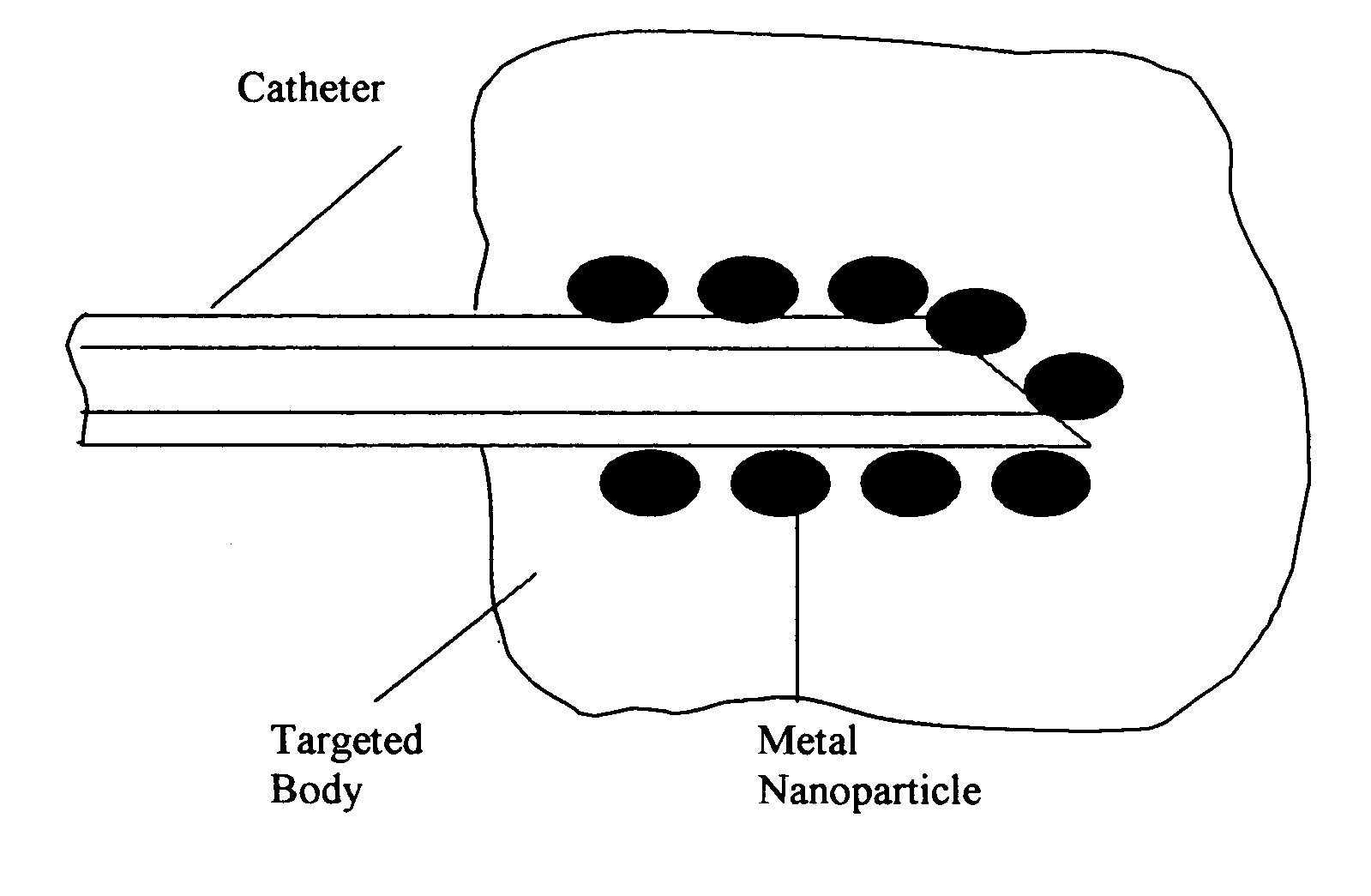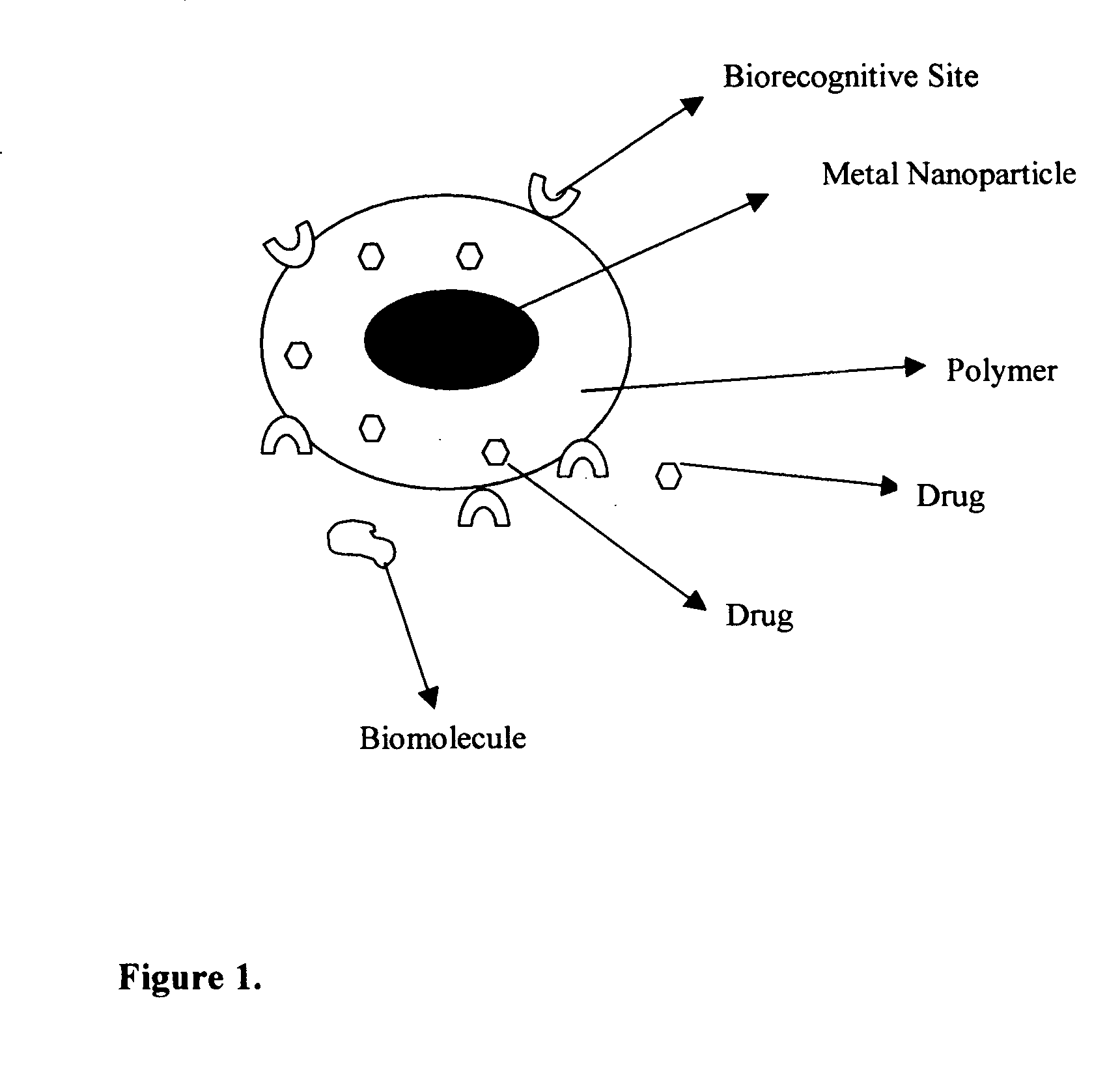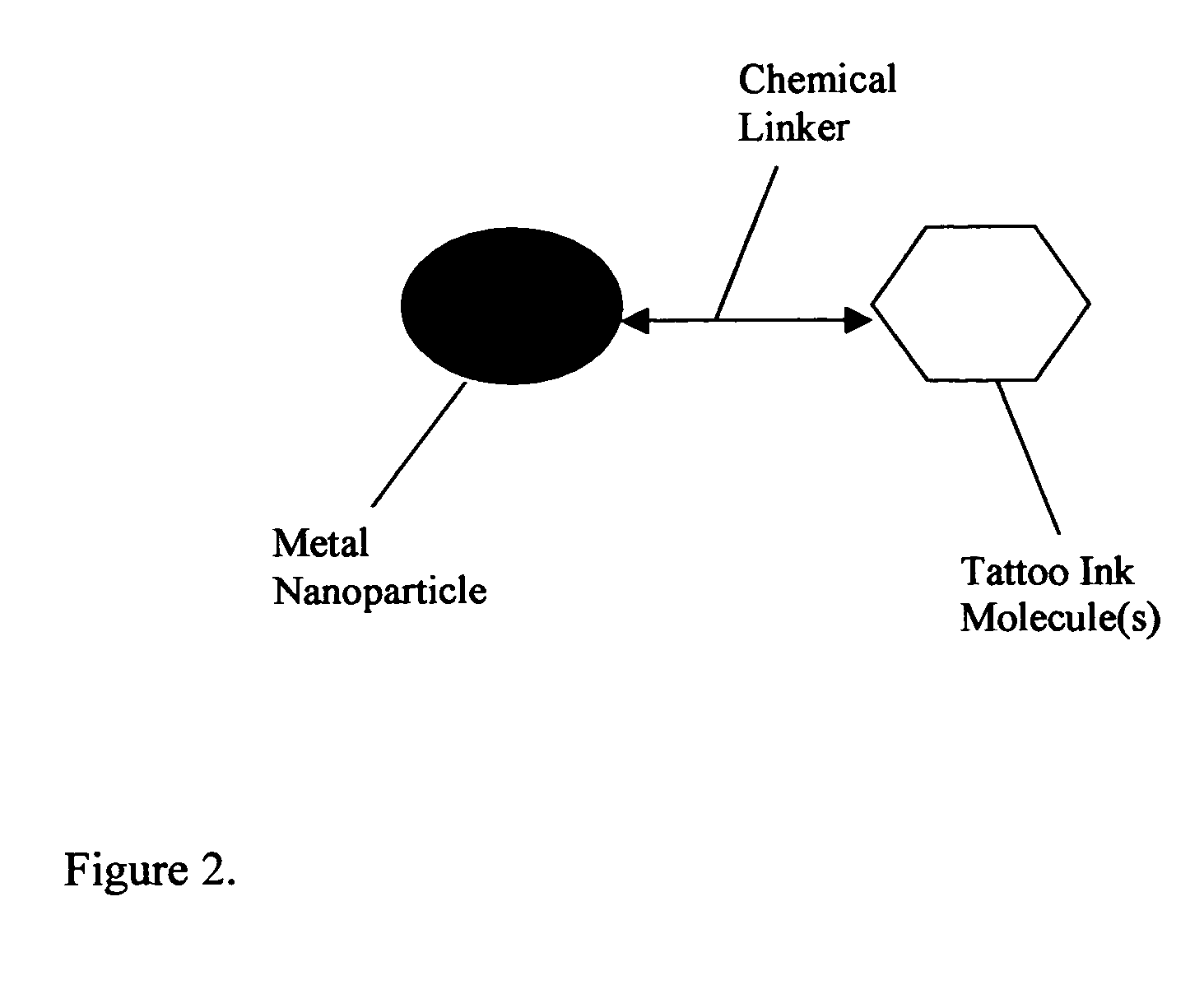Methods and devices for plasmon enhanced medical and cosmetic procedures
a technology of plasmons and cosmetic procedures, applied in hair cosmetics, make-up, therapy, etc., can solve the problems of severe limitation of the application of lasers in medicine, uncomplete understanding of the ablation mechanism, and inability to fully understand the ablation mechanism, and achieve the effect of efficient hair damag
- Summary
- Abstract
- Description
- Claims
- Application Information
AI Technical Summary
Benefits of technology
Problems solved by technology
Method used
Image
Examples
Embodiment Construction
1. Abbreviations and Definitions
[0056] CW optical source—continuous waves source [0057] SPR—surface plasmon resonance generated in a nanoparticle under illumination by electromagnetic radiation and other forms of energy [0058] one-photon mode of excitation—process in which molecule is excited by a one photon absorption event [0059] two-photon mode of excitation—process in which molecule is excited by simultaneous absorption of two photons [0060] multi-photon mode of excitation—process in which molecule is excited by simultaneous absorption of three or more photons [0061] step-wise mode of excitation—process in which molecule is excited by absorption of one photon and subsequently by absorption of second photon [0062] up-conversion mode of excitation—process in which a molecule is excited by lower energy photon than energy of the lowest excited state of the molecule [0063] nano island—a nanoparticle on a substrate without define shape [0064] FRET—Fluorescence Resonance Energy Trans...
PUM
 Login to View More
Login to View More Abstract
Description
Claims
Application Information
 Login to View More
Login to View More - R&D
- Intellectual Property
- Life Sciences
- Materials
- Tech Scout
- Unparalleled Data Quality
- Higher Quality Content
- 60% Fewer Hallucinations
Browse by: Latest US Patents, China's latest patents, Technical Efficacy Thesaurus, Application Domain, Technology Topic, Popular Technical Reports.
© 2025 PatSnap. All rights reserved.Legal|Privacy policy|Modern Slavery Act Transparency Statement|Sitemap|About US| Contact US: help@patsnap.com



